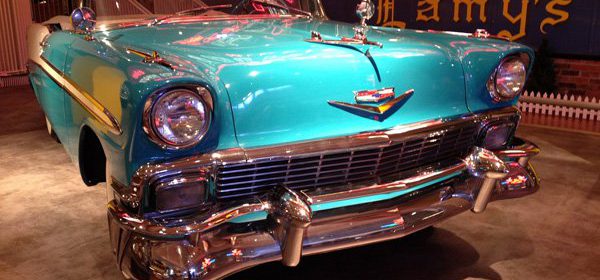Tips to Treating Rust on Vintage Cars


Apart from one well known sleigh, many vintage and classic vehicles will be getting ready for a period of hibernation at this time of year. Rust is possibly the greatest enemy of the classic car owner and guarding against it takes priority when you are preparing your car for winter storage. Rust prevention is, as car owners in general realise, by far the most effective method to avoid problems. This is especially the case with older cars.
Winter storage checks
- Check the body work thoroughly, very thoroughly. Modern cars are well protected when they leave the factory, but vintage or classic cars need regular treatments with rust proofing to maintain their bodywork.
- Clean everything. Any remaining residue of dirt and mud from the heady days of summer – often mud filled in the UK – can be dangerously corrosive containing grit, salt and chemicals picked up on those seemingly innocent summer jaunts. Once thoroughly cleaned apply a rust protection product to those sparkling surfaces.
- Anti-freeze should be used – even if the vehicle is not going to be out and about a great deal. Add the recommended mix and run the engine to ensure that the fluid penetrates throughout the whole engine. Many products contain an anti-corrosive element which should give double protection.
- Treat the vehicle to a complete oil change before storage. Dirt and acids can build up in oil, so removing the old oil and refilling will minimise the risk of rust developing in the engine.
Regular check ups
It’s advisable to get the engine running on a regular basis throughout the period the car is stored – most classic and vintage car owners will be keen to do this without prompting. Simply running the engine for a while every month is a good idea, but if you intend to take the car for a spin to keep it in good working order it’s important to complete a thorough check when you return it to the garage. The amount of salt on the roads in winter will likely be significantly higher, so it’s advisable to keep these runs short. Check the body work and underside again thoroughly, on return to the garage and it’s sensible to clean exposed areas down thoroughly.
When, and if, you find any areas of rust developing treat them promptly, but also pay close attention to any chips or marks and use rust treatment on these areas as well. Housing your car over winter should be done in a dry, leak proof and well ventilated environment. A de-humidifier may well be a good option for some vintage car owners, but if this is not an option allowing air to circulate will help to keep humidity down. During or after particularly cold snaps it’s worth checking the car over for any damage and getting the engine running to make sure everything is in working order.
